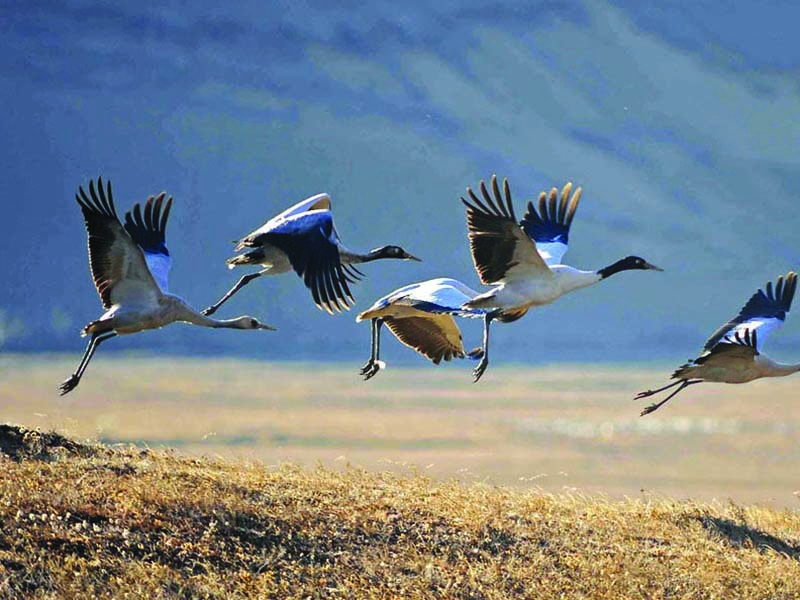
Black-necked crane
Name: Black-necked crane
Food: Barley, oats and buckwheat and will sometimes dig up and feed on potatoes, carrots and turnips.
Life span: 50-60 years
Sound/s: Trumpeting sounds
Habitat: India and Bhutan
Other facts:
- The black-necked crane is a large wading bird with long legs and neck. The head, throat and entire neck of the crane have a white patch beneath the eye and a red crown atop their head. They are seen in summers mainly in the high altitude Tibetan plateau. The breeding areas are alpine meadows, lakesides, riverine marshes and river valleys. Black-necked cranes forage on the ground in small groups, often with one bird acting as a sentinel.
- In winter, groups arrive and leave their feeding grounds. Each group keeps together, but may split into family groups, their own small feeding territories in big marshes or fields. These birds are wary, but in some areas they are accustomed to the local people who don’t disturb them. These cranes appear to be able to distinguish people in traditional dress and are especially wary of others.
- The estimated population of the black-necked crane is between 8,800 and 11,000 birds. They are legally protected in China, India and Bhutan. However habitat modification, drying lakes and agriculture are existential threats.























